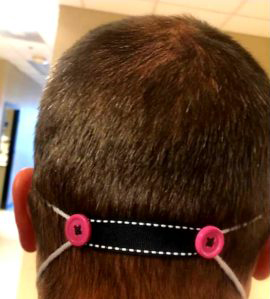AARP Hearing Center
For some older adults with hearing loss, wearing a face mask to the grocery store can be a pain if they are using over-the-ear hearing aids. The elastic bands commonly placed over the ears to secure the mask can get in the way of the tubing that connects the hearing aid to the speaker that sits in your ear. Beyond the discomfort, there is also a chance of losing a hearing aid when removing the mask.
Thankfully, there are ways to address both problems. Be careful when you remove your mask to avoid losing a hearing aid or cochlear implant (CI) processor, which sits on the ear. “Just like removing glasses or a hat, always check to make sure that the hearing aids or CI are stlll there,” says Sheri Gostomelsky, an audiologist based in Deerfield, Illinois.
Beyond that, she says there are products available, such as OtoClip, that use an alligator clip to attach hearing aids to clothing. Gostomelsky, who writes a column for a Chicago Tribune community website, also has ideas on how to comfortably wear hearing aids with a mask. First, consider one that is secured with something other than elastic bands. Cloth ties shouldn't interfere with the ears, but if pressure remains on the ears, there are options. Take a headband and sew two buttons a few inches apart. Wear the headband, with the buttons at the back of your head, and attach the strings of the mask to the buttons. You should be able to adjust the headband to take any pressure off your ears.


If you don't have a headband, you can sew buttons on to a strip of fabric to get similar results. If your crafting skills are wanting, try a paperclip. “Use a large paperclip in back of the head to connect the mask's strings,” Gostomelsky advises.
If you must use a mask with elastic bands, you can try the buttons or paperclip approach suggested for cloth ties. Or, as a reader of Gostomelsky's column suggested, you can skip the elastic bands and slip a loop of nylon fabric over the face mask to secure it (think of a bank robber wearing a stocking over his head).
Another option is to wear a neck gaiter or scarf as a mask. To increase the efficiency of these, try inserting additional fabric (to act as a filter) between your nose and mouth and the scarf or gaiter.
































































